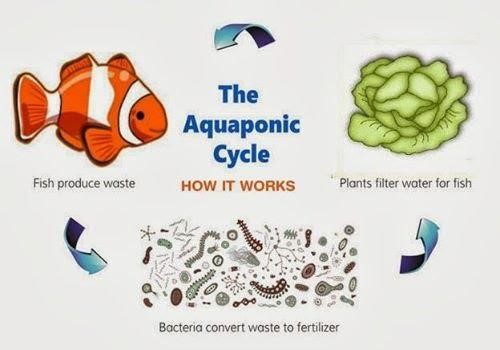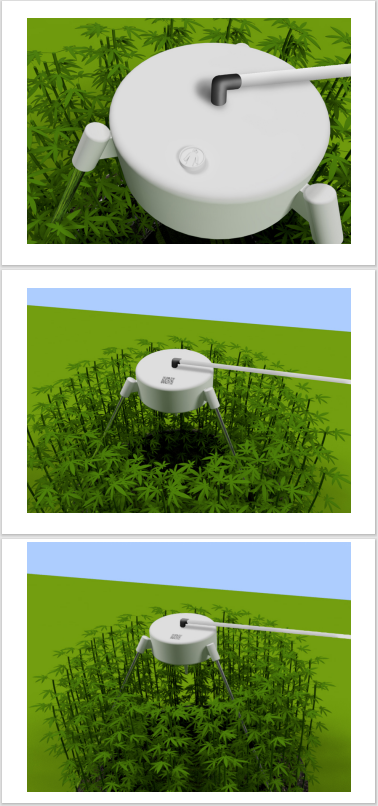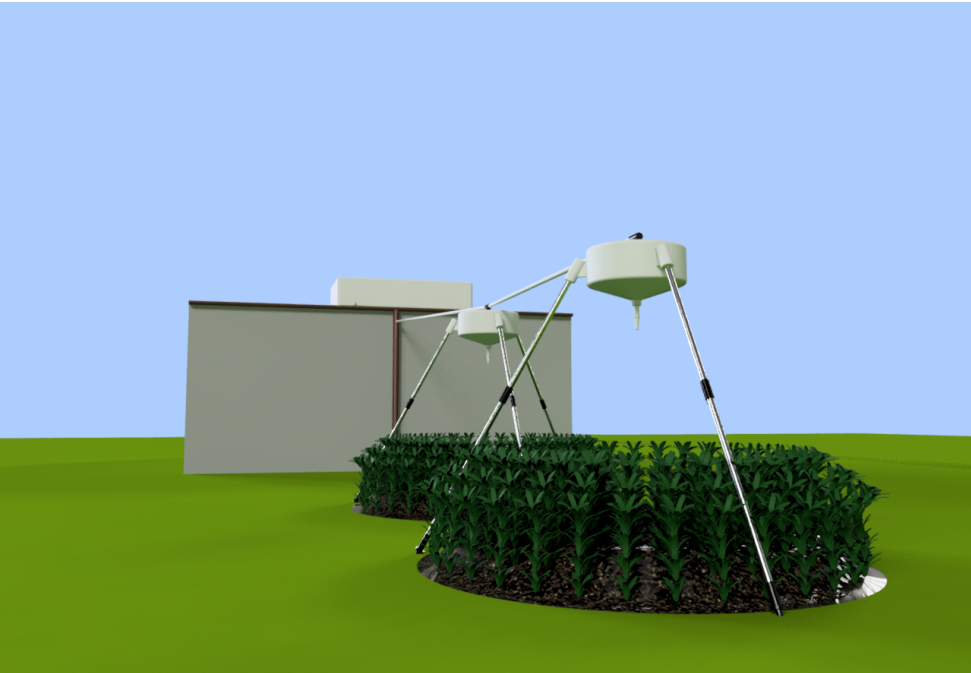Unterlagen für Projektmanage-ment 2021
Kurzbeschreibung: Flutopferhilfe
Rosary Aquakultur und Landmanagement kombiniert die Vorteile der
patentierten Hügelbeetkultur aus der Biosiegelforschung
patent/DE10307771A1/de Offenlegung
mit neuen Verfahren des Aquafarming.
Hierbei wird Dachwasser , Brunnen- oder Quellwasser genutzt
zur Befüllung eines Teiches, der von einem runden Hügelbeet umgeben ist.
Die Anforderungen nach DIN 1986-100 zum Hochwassernachweis werden dadurch erfüllt.
Auch der freie Handel mit Wasserrrechten nach JEFTA ist seit kurzem ermöglicht.
Die Befreiung von Kosten für Abwasser nach Quadratmetern versiegelter Fläche
Der kommunalen Wasserversorgung ist möglich.
Mit QR-reg labels werden Messwerte eimnfach eingescannt
und durch Monitoring, Screening und Evaluation für
Hochwasserprognosen verfügbar.
Die Erhöhung des Wasserrückhaltevermögens
Wird erfasst und in einen Plan übertragen.
70% des Abwassers in Kläranlagen stammen aus Regenwasser.
Somit werden die wirtschaftlichen Vorteile des marktreifen Produktes
Und der Dienstleistungs-Palette mit Gesamtgesellschaftlichen Vorteilen ergänzt.
Design erfolgt über Graphiken und ³ D Print-Dateien.
So können einzelne Systemkomponenten vor Ort hergestellt werden.
Das vermindert die Kosten , erhöht die Erstellungszeiten und vermindert Arbeitsspitzen.
Die Labels mit den Patentlizenzen werden angeboten in unserem onlineshop.
Für die Präsentation und Markteinführung wird ein fahrbares Büro angeschafft.
Anlagen:
Steuererklärungen und vereinfachte
Einnahmen- und Ausgabenrechnung plus Gewinn seit 2004 sind beigefügt.
Graphiken der einzelnen Produkte ebenfalls.
Empfehlungen und Genesis:
Gründung von Rosary 2003 durch Gründungsberatung Zander, Berlin;
Anmeldung des Patentes „Hügelbeet mit Teich“ am DPMA
Science4Life Venture Cup 2003-2004
Coaching durch RKW- Innovation auf NewCome- Stuttgart Gründermesse.2004
Anmeldung als Firma ROSARY Anbau und Anlagen in
Badenwürttemberg und Ausbau der Büros und Geschäftsräume 2004.
Gründungsberatung durch International Steinbeis Institut 2005.
Bau der ersten Anlagen und Befreiung von Dachwasserkosten sowie Brauner Bio-Tonne 2005.
Abspaltung einiger Teile des Patents 2006-2015
Gründung RMI INDIA 2009.
Gründung AIICDIOCESE 2012, Akkreditierung als Archbishop
Weiterbildung des Gründers und Titel und Positionen in diversen
Internationalen Organisationen. MA und Dr. -Titel, President MSCS.
Widerspruchsfreie Patent-Erteilung 2015.
Implementierung, Evaluation und Clearing eines 200 Mio € Umweltfonds am
UN-Klimasekretariat in Bonn 2015 – 2017.
Zusammenarbeit mit Partner Onno Fridrich, Produktentwicklung und Design 2017- heute.
Zusammenarbeit mit Hoily Grail Aquaponics in CANADA- New Brunswick.2018 –
Letter of Intention /Universal Appointment of Purpose
Holy Grail Aquaponics.
We are pleased to present our registered patent and if any are interested in a franchise anywhere in the world please contact
My partner & Co founder CEO. Administration head office is in Germany please contact.
HRH PSPS II
Dr Uwe Rosenkranz.
Email at : uwe@eurobitzrosary.shopping
Aquaponics is the combination of aquaculture (aquatic farming) and hydroponics (soilless agriculture in which plants derive nutrients from nutrient-rich water). It works because aquaculture produces nutrient-rich water that can be circulated through crops where plants both take up the nutrients and filters the water. The clean water is returned for aquaculture where the process repeats itself.
Aquaponics can be a fun hobby, a means of increasing one’s self-sufficiency, or the basis of an entire business.
As a hobby, combining gardening and an aquarium can be both a satisfying challenge to overcome as well as aesthetically pleasing.
For those seeking greater self-sufficiency, but who may lack a means of taking care of livestock for a variety of reasons, aquaponics provides a way to produce natural fertilizer for crops while raising potentially edible freshwater fish or crustaceans.
As entrepreneurs, aquaponics combines two viable businesses, aquaculture and hydroponics agriculture, using their respective strengths and needs to compliment the other creating efficient productivity.
Aquaponics requires several factors to come together to be successful, frustrating beginners unaware of simple yet essential fundamentals. But when a system finally works, one can get incredible results.
The Fundamentals
Fish: Aquaponics can include freshwater fish of any kind and even freshwater crustaceans like crayfish. Anything from ornamental koi fish to edible fish like tilapia, snakeskin gourami, perch, and catfish can be used to stock a tank. The type of fish used depends mostly on what users have experience in raising.
The container used to hold fish can range from a moderately sized fish tank, to large HDPE plastic barrels, to industrial-sized tanks with hundreds of liters/gallons. The size of the tank influences the number of fish that can be kept, which in turn influences the amount of crops that can be grown.
The more fish a system has, the more crops that can be grown. A larger system also means a greater ability to absorb changes that might cause crop or aquaculture failures in smaller systems.
Water pumps appropriate for the size of the system are required to move water out of the tank and into the growing medium. The easiest way to achieve this is to have a water pump maintaining a constant flow to keep the growing medium and the roots it holds moist at all times. Most water pumps include information about the amount of water they can move and how high they can move it. Always pick a pump that falls well within the range of your system.
More complex systems use timers and sensors to flood a grow bed and drain it at regular intervals or when moisture levels drop. These systems, called ebb and flows, are better left to more experienced users.
Crops: Crops can include everything from simple herbs and leafy greens, to fruiting plants like peppers and tomatoes.
Crops are grown in a medium that usually consists of perlite, clay pebbles, and coconut fiber. The container used to grow crops is usually elevated in relation to the fish tank, so that once water is pumped into the crops, gravity can return it to the tank.
Provisions are required to ensure emergency draining for grow beds. That is, if the primary drain is blocked by root growth or any other obstruction, water should have an alternate path to take back to the tank. Without emergency draining, an entire tank could be emptied out onto ground as the grow bed overflows. Water level sensors or floating ball valves can be used to automatically shut off water pumps if tank water levels fall below normal levels.
Nutrients: Fish and crayfish produce a variety of nutrients as a byproduct much in the same way farm animals produce manure which can be used as a rich source of fertilizer.
In an aquaponics system, various types of bacteria are required to break down these nutrients into a form plants can better use. One variety of bacteria takes ammonia and converts it into nitrites, while another converts nitrites into nitrates. The plants take up the nitrates and returns filtered water to the system. The bacteria generally exists both in the fish tank itself as well as in the grow medium used for crops.
The good news is that this bacteria is naturally occurring. A patiently established fish tank will ensure a thriving colony of beneficial bacteria. Having the water pump across the medium for several days without any fish, and adding only a few fish at a time and simple herbs to the grow bed will prevent expensive losses and allow the system to adjust up to full production levels. Using medium from an existing system can help speed up the process.
However, this is where many beginners often fail. They attempt to fully stock their fish tanks and grow their plants right from the beginning, experiencing dead fish and poorly growing crops. This sort of negative, frustrating experience has prevented many enthusiastic but inexperienced beginners from advancing further in aquaponic’s.
The dead fish are a result of “new tank syndrome,” where ammonia builds up due to a lack of bacteria able to break it down. New tank syndrome affects not only new aquaponic systems, but any attempt at all to set up even ordinary home aquariums. Poorly growing plants are a result of low numbers of bacteria needed to convert nitrites into nitrates. This bacteria usually establishes itself fully days or weeks after the first bacteria colonies used to handle ammonia are established.
However, once both types of bacteria colonies have established themselves, the spectacular results many beginners saw from others, and seek for themselves are achievable.
The larger the system and the more the fish, the more and healthier the crops will be. Five or six medium-sized aquarium fish like snakeskin gouramis which grow up to 25 cm (10 inches) can sustain two or three tomato plants and some herbs.
Water: Water pH is generally not a problem for most people because most people have access to nearly pH neutral water. People who already do gardening or take care of fish as a hobby (or both) are already likely familiar with their water quality and can either use it as is, or are aware of what is needed to adjust it. Aquarium hobby shops often include pH testing kits and the chemicals needed to adjust the pH of water.
Water must also be adequately circulated throughout the system. Too much water and too little circulation can deplete oxygen levels that can be detrimental to fish health. Water pumps used for aquariums generally work in coordination with filter systems. They are useful in removing solid waste from the fish tank. In an aquarium, this waste would be moved by the pump to the filtration system. In an aquaponic’s system, this waste resides in the grow bed where it is further used to aid plant growth.
If a system is not set up to remove solid waste from the fish tank, it can create a health hazard to the fish.
Aquaponic Examples
Something as simple as a plastic planter or basket filled with clay pebbles, suspended over a 220 liter (60 gallons) HDPE barrel can provide beginners with a simple yet productive aquaponic’s system. Using 5-6 snakeskin gouramis available at many hobby aquarium shops, a good amount of herbs, or several tomato plants can be grown. It is a great first project for a balcony, rooftop, or front and backyard system. Smaller systems are possible, but produce less impressive results.
Larger systems, however, are not only more impressive, they are regularly used as part of an agricultural business.
Wisconsin-based Growing Power Inc. uses aquaponic’s for its very large operation. On its website, it describes its aquaponic’s setup as follows:
„We fill our growing pots with a mixture of coir and compost. The coir is made from discarded coconut husks and helps wick water to the plant’s root system. The compost provides extra nutrients to grow an abundance of crops within the system. Traditional hydroponic growing, or growing without soil, relies on fish waste alone to fertilize the crops. The problem is, you can only grow crops with lower nutritional needs such as basil. For example, in most traditional hydroponic systems, Boron is found in very low quantities. Boron is essential for flower development in crops – tomatoes, peppers, and cucumbers – which means that production for these kinds of crops is very low in hydroponic systems. At Growing Power, we solved this problem by adding nutrient rich compost to the pots in our system.“
Growing Power Inc. not only uses crops and fish symbiotically, it markets both to local restaurants and customers. Similar operations can be found around the world, with each system differing based on local tastes, experience, and available inputs.
At Growing Power Inc., fish are feed commercial food but also worms which can easily be cultivated on site and even used in another cycle of breaking down organic waste and sending it back to crops. By using compost, vermicompost (compost made using worms), and aquaponics, Growing Power Inc. has managed to create multiple, beneficial and sustainable closed loops that provide both healthy food and a livelihood for Growing Power’s community.
Operations like Growing Power Inc. often offer guided tours, open houses, internships, and workshops to help beginners learn the basics of various agricultural processes including aquaponics. Learning the basics from others with experience helps reduce the learning curve and much of the frustration from overcoming it.
Aquaponics is one of several essential and proven cycles those interested in growing their own food can utilize to leverage processes found in nature on a small scale at home or as a business. While initial success requires patience and a little know-how, once a system is established, it is very easy to keep it up and running, and more than that, improve upon and expand.
While the largest aquaponic systems require significant investment, virtually anyone can afford a small plastic barrel, some aquarium fish, a pump, clay pebbles and a container to put them in. From there, a satisfying hobby, a greater degree of self-sufficiency, or even a potential business may follow.
Let’s examine some other practical solutions and what we can do to support a free economy in all of its forms…
Here is an example of the Aquafarming system’s functions.




